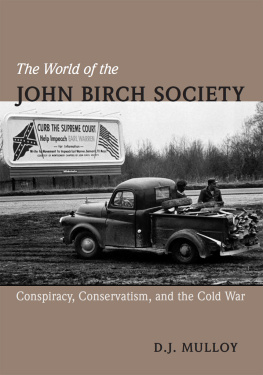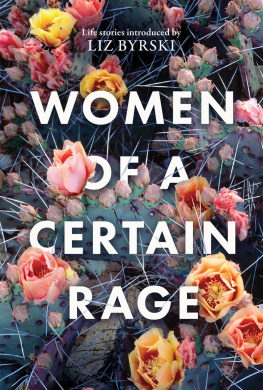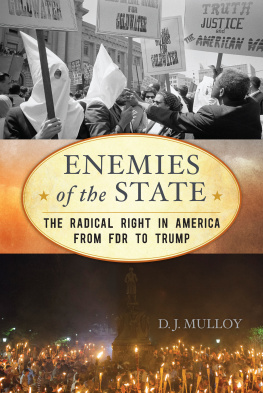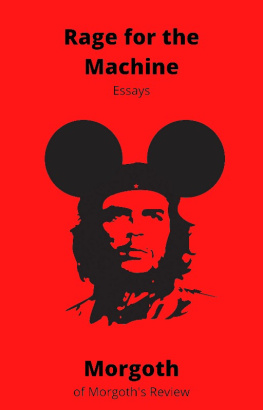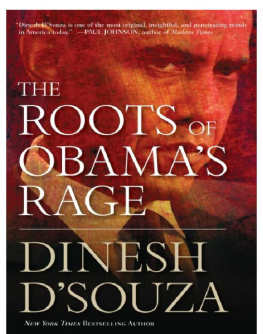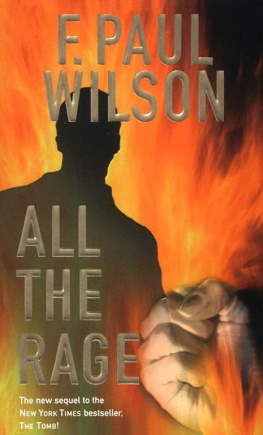D. J. Mulloy - Years of Rage
Here you can read online D. J. Mulloy - Years of Rage full text of the book (entire story) in english for free. Download pdf and epub, get meaning, cover and reviews about this ebook. year: 2021, publisher: Rowman & Littlefield Publishers, genre: Politics. Description of the work, (preface) as well as reviews are available. Best literature library LitArk.com created for fans of good reading and offers a wide selection of genres:
Romance novel
Science fiction
Adventure
Detective
Science
History
Home and family
Prose
Art
Politics
Computer
Non-fiction
Religion
Business
Children
Humor
Choose a favorite category and find really read worthwhile books. Enjoy immersion in the world of imagination, feel the emotions of the characters or learn something new for yourself, make an fascinating discovery.

- Book:Years of Rage
- Author:
- Publisher:Rowman & Littlefield Publishers
- Genre:
- Year:2021
- Rating:4 / 5
- Favourites:Add to favourites
- Your mark:
- 80
- 1
- 2
- 3
- 4
- 5
Years of Rage: summary, description and annotation
We offer to read an annotation, description, summary or preface (depends on what the author of the book "Years of Rage" wrote himself). If you haven't found the necessary information about the book — write in the comments, we will try to find it.
Years of Rage — read online for free the complete book (whole text) full work
Below is the text of the book, divided by pages. System saving the place of the last page read, allows you to conveniently read the book "Years of Rage" online for free, without having to search again every time where you left off. Put a bookmark, and you can go to the page where you finished reading at any time.
Font size:
Interval:
Bookmark:
D. J. Mulloy is chair and professor of history at Wilfrid Laurier University, where he specializes in the study of post-1945 U.S. history. He is the author of American Extremism: History, Politics and the Militia Movement (2004), The World of the John Birch Society: Conspiracy, Conservatism and the Cold War (2014), and Enemies of the State: The Radical Right in America from FDR to Trump (2018, 2020).
THIS IS MY SECOND BOOK in the American Way series. It has been a privilege once again to work with Jon Sisk, the vice president and senior executive acquisitions editor for American history at Rowman & Littlefield, and John David Smith, the general editor of the series. Thank you both for all your enthusiastic support and for all your expert advice. I would also like to thank the wonderful senior production editor Elaine McGarraugh, Benjamin Knepp, and everyone else at Rowman & Littlefield who has been involved in the production and promotion of this book. The office of the Vice-President: Academic at Wilfrid Laurier University provided me with a much-needed course release so that I could continue to work on the book while also fulfilling my administrative responsibilities as chair of the Department of History. I am grateful for the Universitys support of my research and for the support of all my friends and colleagues at Laurier, especially my senior administrative assistant Heather Vogel, who has made my working life easier in countless ways. I am also extremely grateful to the many scholars and activists whose work I have utilized in the course of writing Years of Rage. (Please see at the books end for a complete list of these.) I thank Yashin, Caroline, Luca, Maya, and Caitlin for helping to keep me sane during the writing process, and Ryuichi Sakamoto, Christian Fennesz, Jhann Jhannsson, Brian Eno, and Miles Davis for providing the musical accompaniment. Last, but certainly not least, I thank my beautiful wife, the novelist Pamela Mulloy, and my marvelous, university-bound daughter Esme for being my first readers and strongest supporters, but also, really, for just being themselves.
ON AUGUST 8, 1925, 50,000 MEMBERS of the Ku Klux Klan marched down Pennsylvania Avenue in Washington, D.C., in a massive and highly coordinated show of strength. They were led by a masked horse and rider who displayed one of the Klans sacred emblems, a circular red patch containing a white cross with a symbolic drop of blood at its center. Next came the Klans leader, Imperial Wizard Hiram Wesley Evans, resplendent in flowing purple robes, trimmed with gold, along with a rich array of Klan officials with mysterious and evocative titles such as Grand Dragon, King Kleagle, and Exalted Cyclops. Ordinary members of the Invisible Empire, both men and women, wore their distinctiveand to their enemies, extremely threateningwhite robes and pointed hoods, although not their masks, which had been outlawed for the occasion. The marchers were accompanied by bagpipers, a dozen brass bands, and several fife-and-drum corps as they sang patriotic songs and hymns, waved American flags, and carried banners proclaiming the names of their home states or local chapters. The entire march lasted for over three hours and culminated with speeches at the Washington Monument. All in all, it was an impressive and historic sight, the Klans first ever national parade.
This chapter tells the story of the second Ku Klux Klan from its rebirth in 1915 to the 1940s. It focuses especially on the 1920s, whenas the 1925 march in Washington atteststhe Klan was a formidable political force, with over four million members (some estimates put the figure as high as six million, but it is difficult to know for sure), and as many as 18 million supporters spread out across the United States. Indeed, unlike its predecessor, the second Klan was as strong in the North as it was in the South. It was also much more than a night-riding, vigilante organization determined to oppress Americas Black citizenry. Racism and white supremacy still remained at the heart of the Ku Klux Klan, but its list of enemies also included Catholics, Jews, and immigrants, as well as those it regarded as moral degenerates such as bootleggers, adulterers, and wife beaters. Nor was it just a political movement. Its social and cultural activities were equally important, as were the business opportunities it provided, especially for its leadership.
Yet although the Ku Klux Klans impact was significant, it was also relatively short-lived. By the 1930s and the onset of the Great Depression its nativist appeal was much reduced. New white supremacist groups emerged during this time, including William Dudley Pelleys Silver Shirts, a secretive Klan offshoot known as the Black Legion, and the unapologetically pro-Nazi German-American Bund. This chapter examines these organizations too. We begin, though, with the rebirth of the Klan.
The original Klan was formed by a group of Confederate veterans in Pulaski, Tennessee, in 1865, as a secretive, terroristic organization committed to the reinstatement of white supremacy in the American South during the Reconstruction era. The second Klan was formed in 1915 in Atlanta, Georgia, by William Joseph Simmons, a 35-year-old former preacher, fraternity organizer, and veteran of the Spanish-American War. Simmons was a native of Alabama whose father, Calvin Henry Simmons, had been an officer in the old Klan, or at least so his son claimed. Unable to follow his father into the medical profession, Joeor Doc as he was still nonetheless sometimes calledinstead became an itinerant minister for the Methodist Episcopal Church, riding the circuits in Alabama and Florida, where he honed his oratory skills until he was dismissed for inefficiency in 1912. Thereafter Simmons had a series of jobs, including as a garter salesman and a teacher, before finding his true calling as a paid organizer for fraternal orders.
The early years of the twentieth century were boom years for fraternal societies, with millions of Americans joining a wide range of organizations including the Masons, the Elks, the Red Men, the Odd Fellows, the Knights of Pythias, and the Ancient Order of United Workmen. Offering mutual support, companionship, community, but also significant opportunities for networking and personal advancement, fraternal organizations became an integral part of American life. Simmons himself belonged to 15 different ordersas well as several churchesrising to the position of Colonel in the Woodmen of the World, in command of five regiments. He was first and foremost a fraternalist, he said, and he had long dreamed of establishing his own fraternal orderthe greatest of them allone he would model on the original Klan. He claimed that the idea had first come to him in a vision in 1901, when horse-backed Klansmen in white robes had suddenly appeared riding across the sky one summer evening.
Fourteen years later Simmons got the opportunity to turn his vision into reality. Confined to his bed for three months because of a car accident, he obtained a copy of the Klans Prescript from 1867 and used both it and his intimate knowledge of the world of fraternities to create a revived Ku Klux Klan, with new mystical rituals, a new constitutionthe Kloranand a new, strict hierarchy of offices. Simmons also had the considerable foresight to copyright his ideas. Two events in particular made 1915 a good year to attempt a Klan revival. The first was the appearance of D. W. Griffiths technically groundbreaking, if irremediably racist film, The Birth of a Nation. The second was the lynching of Leo Frank, a Jewish factory superintendent.
Griffiths film was an adaptation of a best-selling novel by Thomas Dixon titled The Clansmen: An Historical Romance of the Ku Klux Klan (1905). Both book and film were paeans to the gallantry of the Old South, the nobility of the Lost Cause, and the heroism of the Klan, with plentiful depictions of the catastrophic indignities of Reconstruction and the supposed inherent bestiality of African Americans. Dixon, a well-connected, fiery evangelical minister from North Carolina, who had presided over New Yorks Twenty-Third Street Baptist Church for nine years, was clear about his motivations in writing
Font size:
Interval:
Bookmark:
Similar books «Years of Rage»
Look at similar books to Years of Rage. We have selected literature similar in name and meaning in the hope of providing readers with more options to find new, interesting, not yet read works.
Discussion, reviews of the book Years of Rage and just readers' own opinions. Leave your comments, write what you think about the work, its meaning or the main characters. Specify what exactly you liked and what you didn't like, and why you think so.

